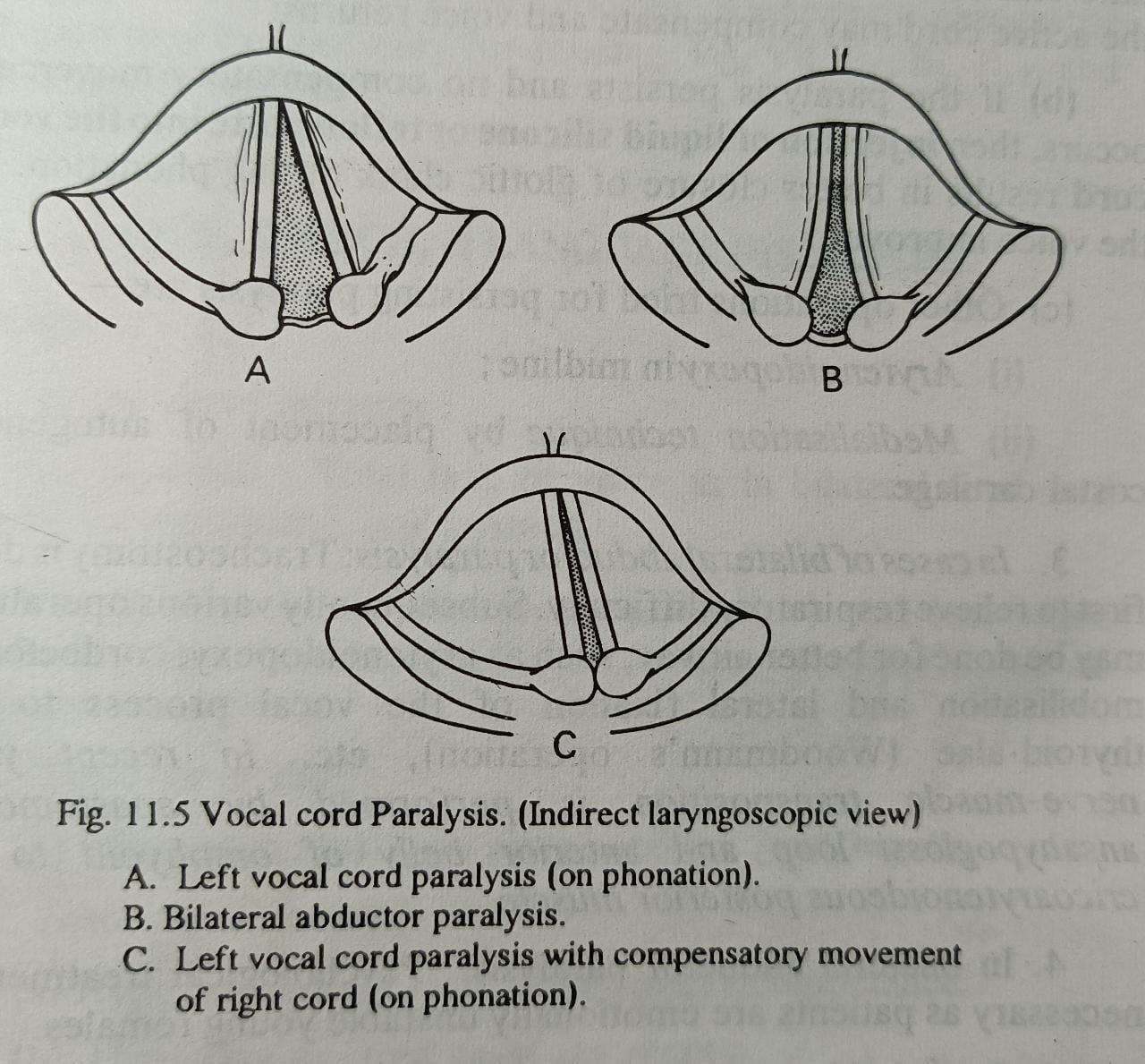



MOTOR PARALYSIS OF THE VOCAL CORDS
Vocal cord paralysis may be-
(A) Unilateral
(a) Right; (b) Left.
(B) Bilateral
(a) Abductor
(b) Adductor
(c) Total (Both abductor and adductor including cricothyroid).
Courses of Recurrent laryngeal nerve:
The Right nerve has a shorter course. It arises from vagus in front of subclavian artery (4th arch), then hooks round the artery and passes upward and medially to larynx in close relation to inferior thyroid artery. It enters the tracheo-oesophageal groove and enters into the larynx behind the cricothyroid joint.
Left nerve- arises from vagus in front of aorta and then hooks round the arch of aorta and ligamentum arteriosum (6th arch derivative) and passes upward. In the neck it is already in the tracheo-oesophageal groove before entering larynx.
Surgical importance- Right nerve is involved more in neck lesion and left nerve in chest lesions as it has longer course in the chest.
Semon's law- postulates that in all progressive organic lesion of the recurrent laryngeal nerve, the abductor muscles of the larynx are affected before the adductors. It also states that the paralysis of adductor type is of functional origin.
1. Bilateral abductor paralysis- Voice is good; but as the vocal cords are in median or paramedian position, there is respiratory difficulty, often severe.
2. Bilateral adductor paralysis- There is aphonia, or the voice is reduced to whisper. There is bowing of the vocal cords on phonation due to tensor muscle weakness.
3. Total paralysis- Patient is aphonic. There is no respiratory difficulty. Cords are seen to be in cadaveric position.
4. Superior laryngeal nerve paralysis (crico-thyroid paralysis)- Voice is rough and tires easily. Respiration is unaffected. Vocal cords are wavy (rather sagging down) and show tensor weakness. On phonation the two cords are at different planes.
Treatment-
1. Treatment depends on the main aetiology of the nerve paralysis.
2. In unilateral nerve paralysis- No active treatment is necessary for 6-9 months during which time either there may be recovery of the paralysed vocal cord or the active cord may compensate and voice returns.
3. In bilateral adductor paralysis- Psychological treatment is necessary as patients are emotionally unstable young females.
4. Speech therapy often helps.
SENSORY PARALYSIS OF THE LARYNX
This result from involvement of the internal laryngeal branch of the superior laryngeal nerve.
Aetiology
Peripheral neuritis; traumatic lesion to the nerve in the neck; central lesions like multiple sclerosis, vascular accidents. tumours, etc.
Clinical features
There may be history of coughing or choking episodes, while swallowing. Some patients are asymptomatic, if unilateral. On examination, larynx is found to be insensitive to touch and cough reflex is diminished.
Management
Temporary nasogastric intubation may be necessary for feeding.
TREATMENT AT DR. SOHAN LAL CLINIC
The integrated POLYCLINIC facility offers patients to select their treatment either from the Department of Homeopathy or from the Department of Medicine.
We provide scientific, research-based, and professional services to people across the world, aiming to achieve the highest success rate.
